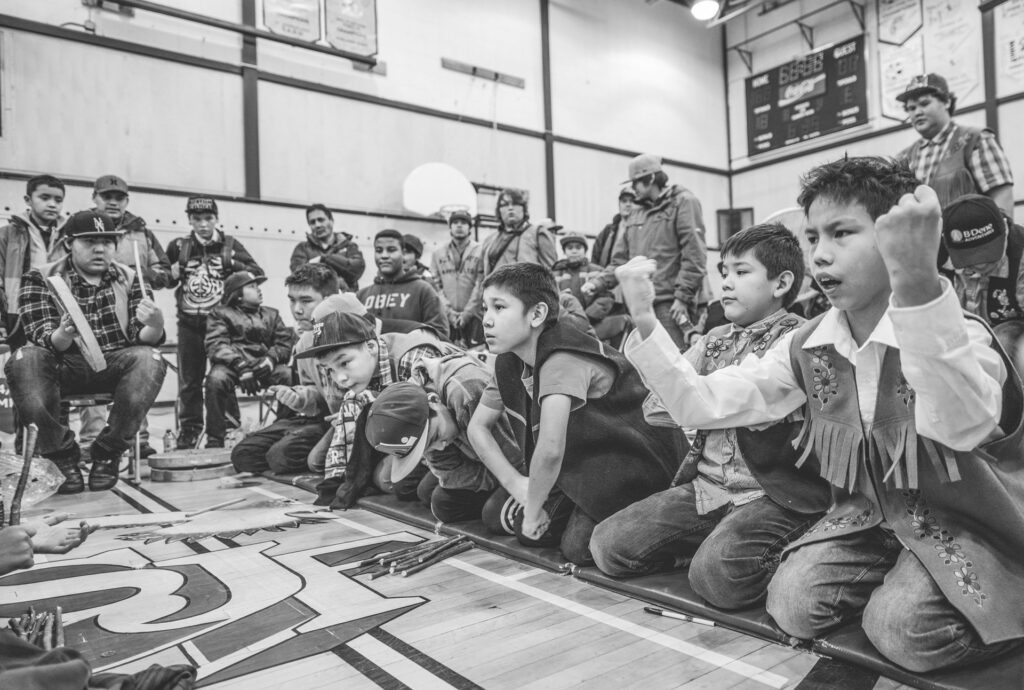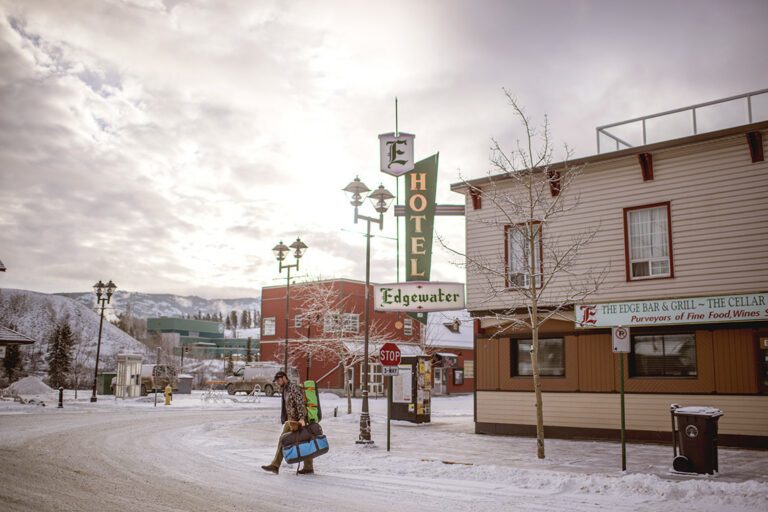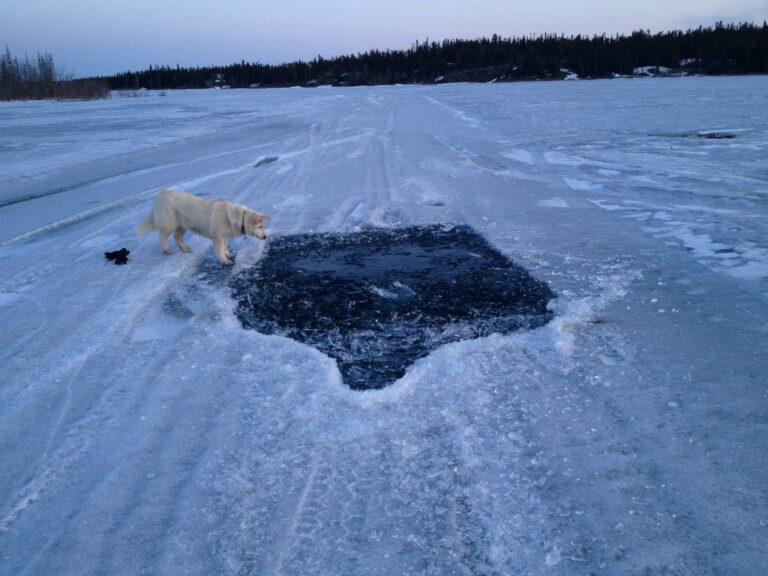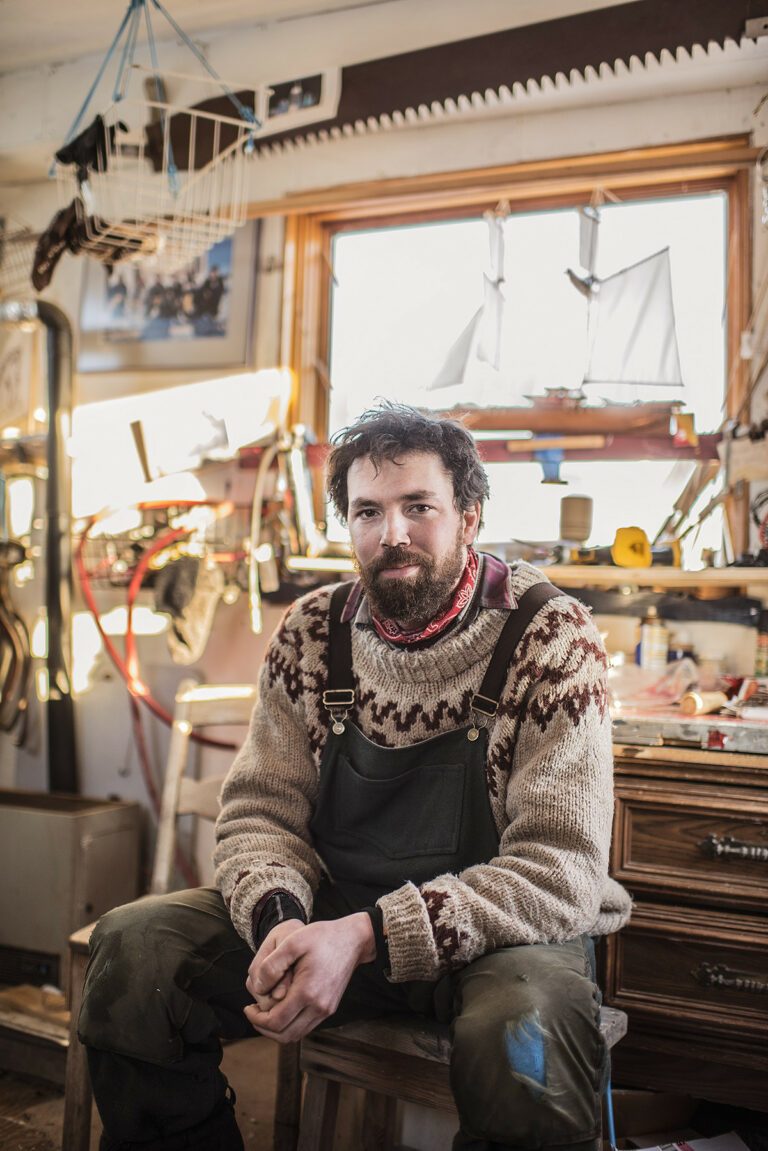On a snowy Thursday evening, I drove to the N’Dilo Community Centre to try my hand at hand games. I’d heard about the weekly games months ago and was eager to learn.
Upon arrival, I was handed a caribou skin drum and invited to kneel on a blue gym mat in line with four teammates. With the opposing team pounding out a brisk double beat, my teammates and I bent low over our knees, passing tokens – a piece of Lego, a coin – from hand to hand underneath our drums or jackets. Bouncing on our haunches, we rose in unison and presented our hands to the opposing team.
Hand games is, in a sense, an intricate guessing game where one of the players from the attacking team, the shooter, has to guess which hand his opponents are hiding tokens in.
“It’s all about reading body language, watching the eyes, seeing the muscles in the hands,” says Bobby Drygeese, who organizes the Thursday night games.
The guess comes in the form of a hand signal called a shot, and there are a huge variety of them. Simpler ones indicate all the defending players should reveal their right or left hands. More complex shots split the opposing line, so, for example, all players to the left of a chosen player reveal their left hands and all to the right reveal their right hands.
It’s all about style and swagger. Each player has their own way of shooting, presenting their hands and revealing their tokens, mocking incorrect guesses with pursed lips or a shake of the wrist.
Although I’d seen a demonstration of the game at the Prince of Wales Heritage Centre in the summer, it was a learn-by-sideways-glance situation, with my teammate Randy Baillardon translating the meaning of different hand signals for my benefit.
If the guess is correct, the player is knocked out for the round. The shooter keeps guessing until he has knocked out all his opponents, then the attacking team becomes the defending team. For each incorrect guess, the defending team gets one of their opponents’ sticks – there’s usually 12 in tournaments – and they trade them back and forth until one team has all.
In the first round, I survived two or three shots before being knocked out. I stretched my cramped legs, then tried, without much success, to lock into the pulsing double beat of the drums.
Nation Building
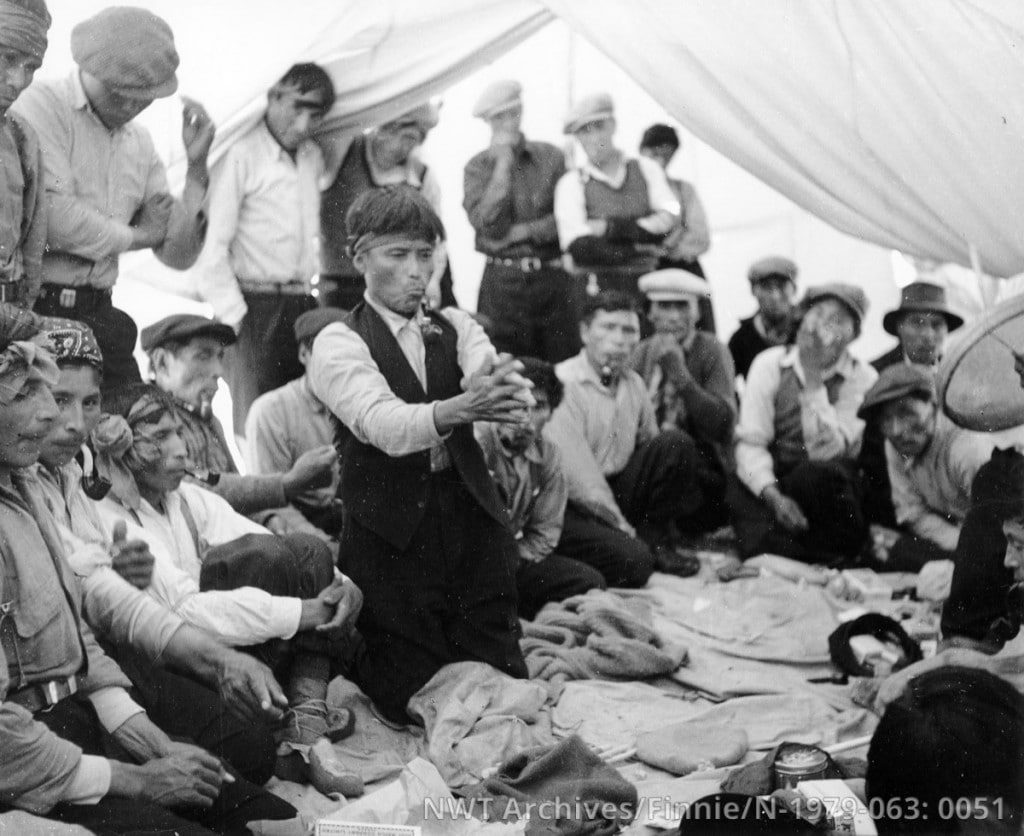
Rae, 1939
The game’s history stretches back to trap lines and community gatherings, where dog sled teams from different communities would face off against one another.
“People would bet tools, dogs, anything they needed,” says Drygeese. It was winner takes all and sometimes losers were left destitute.
The weekly games in N’Dilo are, by contrast, just for fun. They started as an afterschool program in N’Dilo in 2008. Around six people showed up to the first session, and within a few months, dozens of youth and elders were showing up from N’Dilo and busing or driving in from Dettah.
“It keeps the kids socializing and shows them they’re important to the community,” said Drygeese.
The evening I attended, there were around 10 players and half a dozen spectators, including a toddler who helped his dad play in between tossing toys around the room.
“We’re trying to look at it as nation building,” says Chief Edward Sangris of Dettah, who tries to make the Thursday games several times a month. “It’s giving people pride and closing the gaps between elders and youth.”
Many youth who previously showed little interest in Dene culture have begun attending drum dances and community feasts after getting involved in the weekly games.
“Today’s society is geared towards the modern way of life, with computer games and TV, the younger generation is more involved in western culture,” he says. “Hand games is getting them back into our way of life and our tradition, it’s letting them say ‘I’m an Indian, I can do this.’”
Growing Popularity
On a Friday earlier in December, Sir John Franklin School hosted a regional hand games tournament for high school and junior high students. The drums echoed through the school’s main lobby from the gym where the older students gathered and the cardio room on the second floor where the younger ones bobbed and swayed eagerly. Students milled in the hallways in brown leather vests with floral embroidery. Many of the players had their own vests, though a teacher at Sir John had made vests for her school’s team.
It’s the third year Sir John has hosted the tournament and the first year junior high students have taken part.
All told there were 11 teams – nine players on each – eight from Yellowknife, two from Behchoko and one from Fort Providence.
The annual tournament is indicative of the game’s resurgent popularity across the territory. Communities are hosting ever-larger tournaments, some attracting dozens of teams from as far as Alberta and the Yukon. Last February, 42 teams gathered in Whati for a three-day tournament. This coming February, Dettah is hosting a large tournament and Drygeese says he’s expecting at least 30 teams to show up.
One of the big draws is the money. There can be up to $50,000 on the table at larger tournaments. Players on winning teams can walk home with thousands of dollars – the rest of the pot is split between members of other high-ranking teams.
Nineteen-year-old Jacob Rabesca, who played in the Sir John tournament on Behchoko’s Chief Jimmy Bruneau High School team, won $2,000 last year in a tournament in Behchoko.
“It let me help out my mom and dad,” he says. Though he added he plays mostly for fun and to “hang out with friends and family – there’s a lot of community.”
Younger players in the big tournaments don’t always get money, but they can win prizes like iPads and big-screen TVs.
“Some people say the money is changing the games, but really it’s always been a gambling game,” says Mike Johnston, the cultural activities coordinator at Sir John.
Another traditional aspect of the game, which is more controversial, is the exclusion of women and girls. It changes from community to community, but in Yellowknives territory, women don’t play.
You might expect this to pose a problem when events are held in a public school, but Johnston says it hasn’t been. Most of the Dene girls seem comfortable with not playing, he says, and few non-Aboriginal girls seem interested. There is some consternation among female teachers, but he doesn’t think the rule will be changing. “We’re on Yellowknives Dene territory, so we’ll follow their laws.”
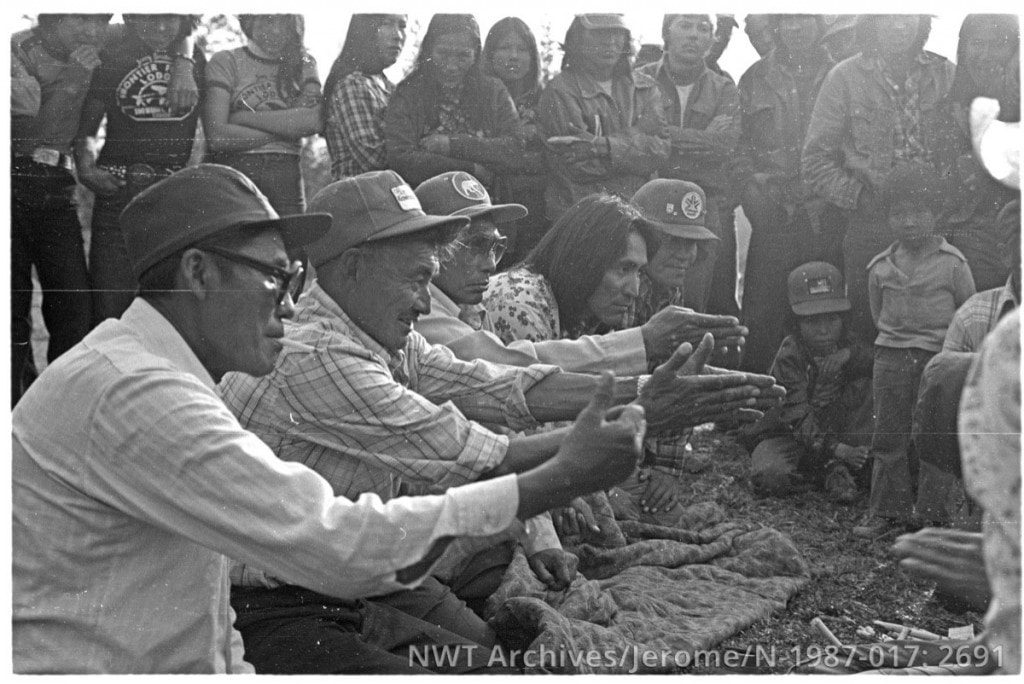
Snowdrift River, 1979

